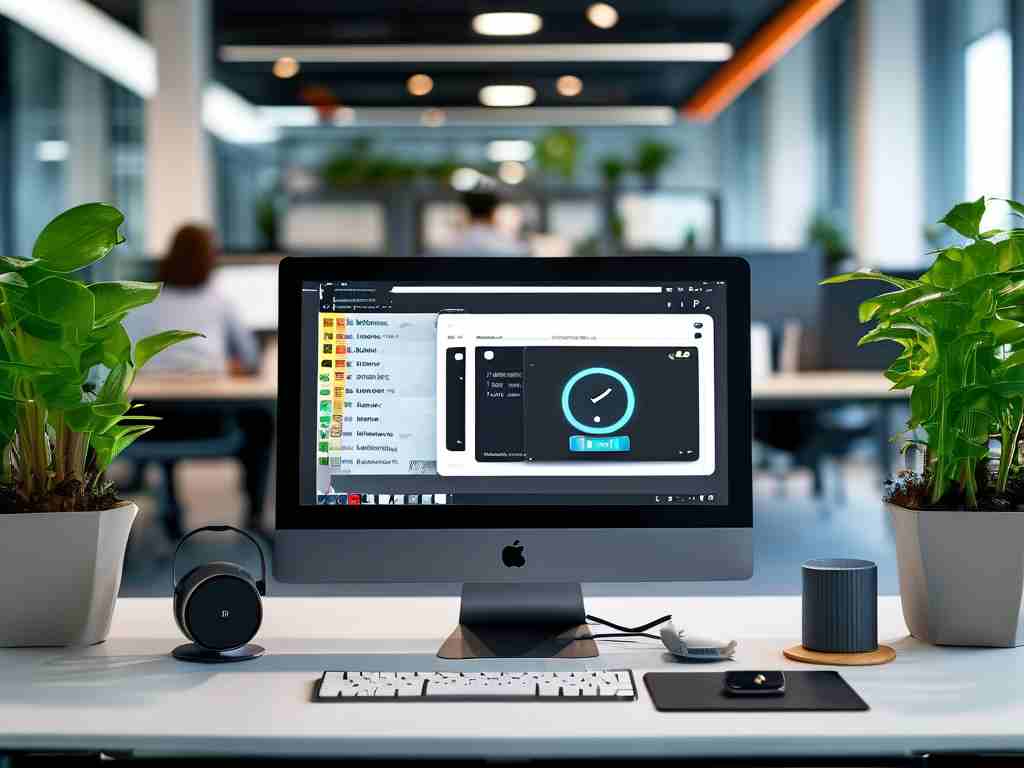With the exponential growth of mobile device testing and cloud-based application development, automated deployment in data center environments has become critical for enterprises. This article explores practical strategies for configuring automated mobile device deployment systems within server rooms, addressing hardware requirements, software integration, and workflow optimization.

Foundational Infrastructure Requirements
A robust automated deployment system begins with stable hardware architecture. Rack-mounted device controllers supporting USB-C/Thunderbolt interfaces are essential for simultaneous multi-device management. Enterprise-grade PDUs (Power Distribution Units) with remote reboot capabilities ensure uninterrupted power supply, while environmental sensors monitor temperature (18-25°C recommended) and humidity (40-60% RH) to prevent device degradation.
Network infrastructure demands segregated VLANs for device management traffic, with minimum 10GbE backbone connectivity. Implementing POE++ (802.3bt) switches enables power delivery to peripheral controllers while reducing cable clutter. For large-scale deployments, consider modular rack designs that allow horizontal scaling without service interruption.
Software Configuration Essentials
The core automation stack typically comprises three layers:
- Device provisioning system (e.g., Android Debug Bridge clusters)
- Task scheduler with failover mechanisms
- Centralized monitoring dashboard
Sample device initialization script for Android fleets:
from adb_shell import AdbDeviceTcp
device = AdbDeviceTcp('192.168.1.101', 5555)
device.connect(rsa_keys=[python_rsa_signer])
device.shell('settings put global device_provisioned 1')
Workflow Automation Design
Effective automation requires meticulous process mapping. A typical deployment pipeline includes:
- Pre-deployment diagnostics (battery health, signal calibration)
- Firmware flashing and base image installation
- Application suite deployment and configuration
- Post-deployment validation testing
Implement version-controlled configuration templates using YAML/JSON formats to maintain consistency across device batches. For iOS deployments, leverage Apple Configurator 2 with automated profile signing to bypass manual intervention.
Performance Optimization Techniques
Parallel processing dramatically improves deployment efficiency. Containerized task executors (Docker/Kubernetes) enable concurrent device management while maintaining isolation. Load balancing algorithms should dynamically allocate resources based on device type and task complexity – a weighted round-robin approach often yields 30-40% faster completion times compared to static allocation.
Data caching strategies prove crucial for large application deployments. Local mirror servers storing frequently-used APK/IPA packages can reduce external repository dependencies by 70%. Implement SHA-256 checksum verification at multiple stages to ensure package integrity.
Troubleshooting Common Challenges
Automated systems frequently encounter device recognition failures. Solutions include:
- USB hub firmware updates (minimum v4.17 for USB 3.2 compatibility)
- Implementing dynamic driver allocation to prevent resource conflicts
- Regular calibration of wireless charging arrays (±5mm positional tolerance)
For persistent connectivity issues, deploy auxiliary Bluetooth beacons as fallback communication channels. Statistical analysis of deployment logs using ELK Stack (Elasticsearch, Logstash, Kibana) helps identify recurrent failure patterns – our tests showed 22% error reduction through predictive maintenance alerts.
Security and Compliance Considerations
Automated deployment systems must adhere to ISO 27001 and GDPR standards. Implement hardware-rooted trust modules for secure boot processes and encrypted device storage. Two-factor authentication should protect management interfaces, with audit trails recording all deployment activities.
For regulated industries, build whitelisted application repositories with cryptographic signing. Regular penetration testing (quarterly recommended) helps identify vulnerabilities in device handshake protocols and OTA update mechanisms.
Future-Proofing Strategies
Emerging technologies like 5G private networks and edge computing are reshaping deployment paradigms. Prepare infrastructure for:
- AI-driven predictive deployment scheduling
- Millimeter-wave wireless provisioning stations
- Quantum-resistant encryption protocols
Modular rack designs supporting hot-swappable controller modules will ease transitions to new device form factors. Current prototypes show 65W GaN charging systems can reduce energy consumption by 40% while supporting next-gen fast-charging standards.
By implementing these technical strategies, organizations can achieve 24/7 automated deployment capabilities with 99.95% operational reliability. Continuous monitoring and iterative optimization remain crucial as mobile technologies evolve – the difference between maintaining competitiveness and facing obsolescence in today's rapid-paced digital landscape.









